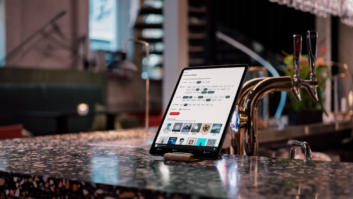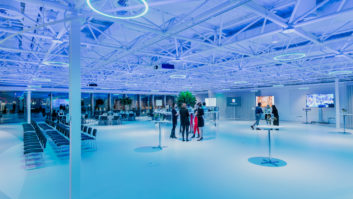 Early 2020 introduced the greatest movement towards remote work the current labour force has ever experienced. The impact from Covid-19 has forced a shift in the collaboration tech industry and put a spotlight on virtual team collaboration and how it plays a role in maintaining business continuity now and in the future.
Early 2020 introduced the greatest movement towards remote work the current labour force has ever experienced. The impact from Covid-19 has forced a shift in the collaboration tech industry and put a spotlight on virtual team collaboration and how it plays a role in maintaining business continuity now and in the future.
The risks of noise pollution, including decreased motivation at work, have been documented for the last 20 years (https://news.cornell.edu/stories/2001/01/even-low-level-office-noise-can-increase-health-risks). A survey by Interface and Radius Global Market Research revealed that 69% of employees are negatively impacted by noise at work. Their concentration, productivity and creativity may decline as a result. But there are two other things to consider: half of the survey participants said that noise levels would impact their decision to accept a job, and 16% would avoid the problem by working remotely.
SERIOUS ISSUES
While there are more work-from-home opportunities than ever before, it’s safe to assume that most businesses don’t perceive the negative impacts of sound as a serious issue. As a result, they could lose a great candidate without even knowing why. But what if an employee chooses to join the team whose productivity is hindered by poor videoconferencing audio or video tech? The results could be just as detrimental. Research published in the International Journal of Human-Computer Studies (https://www.sciencedirect.com/science/article/abs/pii/S1071581914000287?via%3Dihub) found that people appear to be less attentive when transmission delays occur.
Attentiveness may be the tip of the iceberg. With unintelligible audio or poor picture quality, enterprises could be hampered in their shift to successful remote or hybrid working arrangements. But by taking the time to understand these problems, and by relying on technology that can prevent them from occurring, businesses can ensure their employees work in a positive and balanced sound environment.
SOUND START
Let’s start by addressing sound intelligibility. When setting up an office for videoconferencing, IT professionals must deploy technologies that enable employees to work as efficiently as possible. In other words, they shouldn’t notice when new technology is in place, nor should the people they are communicating with at home or in other office locations.
Every company is different, and there are a variety of audio solutions and configurations to meet their needs. To reduce reverberation, loudspeakers could be placed closer to participants in a meeting room, lessening the number of reflective surfaces the audio comes in contact with. From utilising ceiling-mounted loudspeakers to adding sound-absorption materials, rooms can be reconfigured to control how sound behaves with the space and reduce unwanted noise.
For IT teams looking for a consolidated, in-room solution, the right all-in-one videobar can connect everything they need with a single USB cable. With multiple speakers inside, videobars are designed to capture and optimise sound from the multiple angles of the conference participants’ throughout the space. They are also designed with a quick setup in mind, providing a fast and convenient way to quickly kickstart any meeting.
EMPOWERED VIDEO
Computer displays have evolved tremendously in recent years, achieving 4K ultra-HD resolutions, impressive clarity and an incredible array of colors. The irony is that most of the cameras sitting on top of them have failed to keep pace with this evolution. While it might seem like a mistake, the reality is that modern displays were built for high-end digital content, including pre-recorded video, not videoconferencing.
This is another area where high-quality videobars can make a difference. If selecting one with a built-in, high-resolution camera, IT pros can avoid the hassle and additional cost of purchasing and installing a separate camera. Autoframing is another critical feature to look for – with it, participants can more easily work in a variety of spaces, from huddle spaces and conference rooms to remote locations, and clearly see participants and information shared on whiteboards.
Great audio and video are immersive; they become a natural part of the meeting experience, enhancing the moment with intuitive, transparent technology. Today’s business is more connected than ever before and demand audio and video technology that can keep up with their expectations. By choosing the right technology up front, IT professionals can set them up for success now and in the future.







